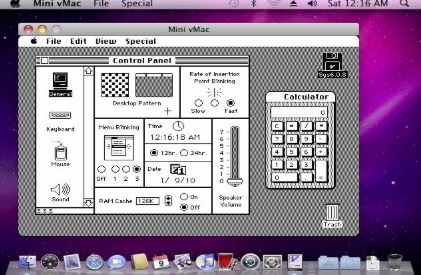
With a local backup copy in hand and secure cloud storage, you know your data is always safe no matter what happens. You can learn more about using Time Machine in our Mac Backup Guide.
MOUNT HARD DISKS IN MINI VMAC SOFTWARE
macOS’s built-in Time Machine backup software is a good start, especially when paired with Backblaze Computer Backup. In this case it’s called “Flash Storage.”īefore you get started, you’ll want to make sure that any important data on your hard drive has moved somewhere else. The third screenshot shows an SSD as well. In the next case, we see we have a solid state SATA Drive (SSD), plus a Mac SuperDrive. The first example, below, shows a SATA Disk (HDD) in the system. To find out whether your device has a HDD or SSD, or at least to make sure, click on the Apple menu and select “About this Mac.” Once there, select the “Storage” tab to see which type of drive is in your system.
MOUNT HARD DISKS IN MINI VMAC UPGRADE
For people using older models, you may be looking to erase your drive before you upgrade or change devices. If you bought your device before 2010 or you have a desktop computer, there’s a chance you may be using an HDD.

Apple also now features devices with Flash SSDs, a hybrid of HDDs and SSDs.

Around 2010, Apple moved to using only SSD storage in its devices, although its desktop computers continue to offer the option of both SSD and HDD storage. Which Type of Drive Do You Have?īefore we start, you need to know whether you have a HDD or a SSD. Before you get rid of your old computer, whether that’s tossing it or selling it, it’s best practice to ensure all of that data has been securely erased from your drive so that it can’t be accessed by anyone else. Hackers looking to exploit data that provides access to passwords or your identity are particularly interested in getting their hands on this data. The computer’s drive will contain all of your emails, contacts, documents, and more-in other words, all of the sensitive data that you wouldn’t want to share with other people. Your computer and the external drives you may use store all of your personal data. But there are far less destructive ways to make sure your data is gone for good. Well, taking a sledgehammer or projectile weapon to your old machine is certainly one way to make the data irretrievable, and it can be enormously cathartic as long as you follow appropriate safety and disposal protocols.

What do I do with a Mac that still has personal data on it? Do I take out the disk drive and smash it? Do I sweep it with a really strong magnet? Is there a difference in how I handle a hard drive (HDD) versus a solid-state drive (SSD)?


 0 kommentar(er)
0 kommentar(er)
